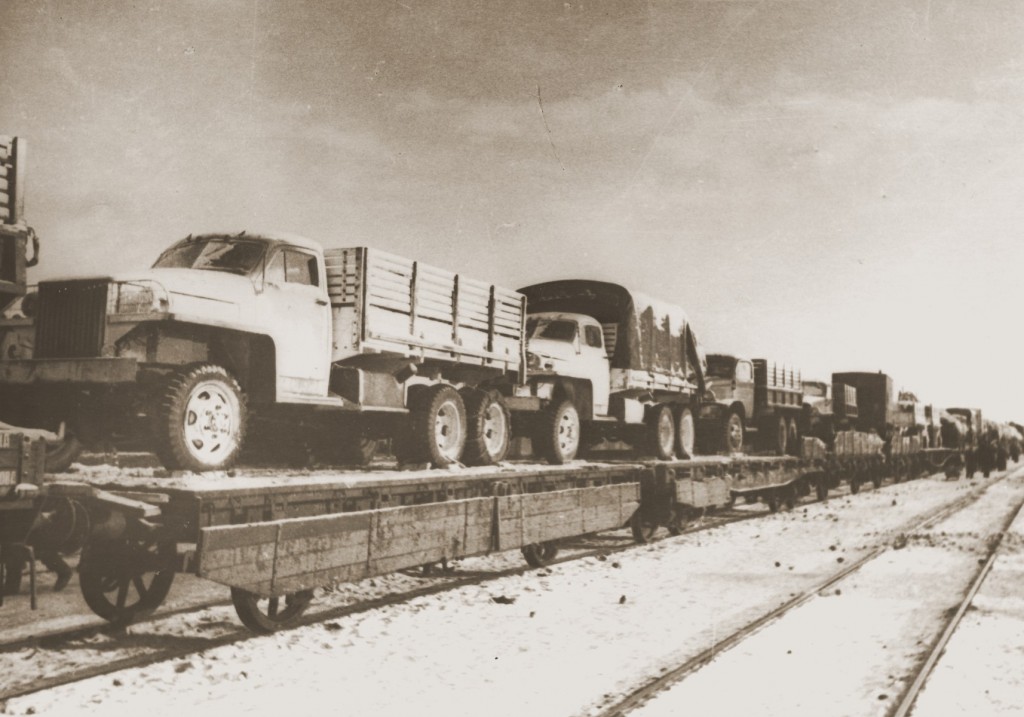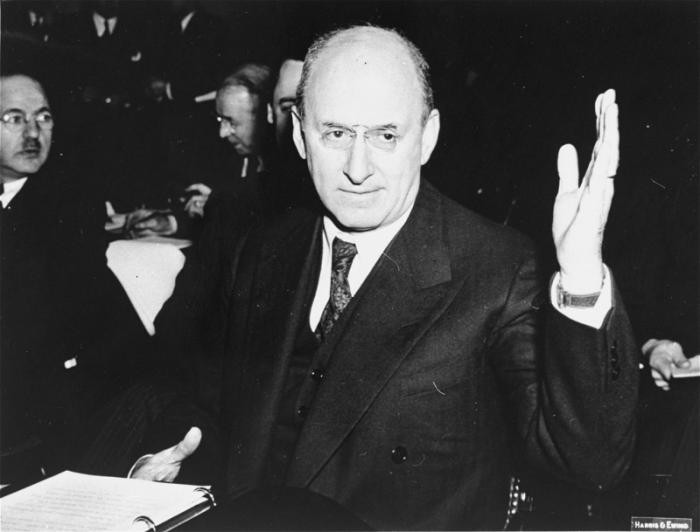
Lend-Lease
This US policy extended material aid to the Allies before and after the United States entered World War II. Great Britain was the original recipient of aid, but the Soviet Union later also received financial support.
Key Facts
-
1
In September 1940, President Roosevelt gave 50 outdated US naval destroyers to help protect British convoys bringing war materiel across the Atlantic Ocean. In return, Britain gave the US a number of long-term leases bases in various British colonies, mostly in the Western Hemisphere.
-
2
In the summer of 1940, Britain faced isolation and possible defeat. As Britain no longer had the financial resources needed to acquire vital war materiel or the means to get it safely to its destination, the Lend-Lease arrangement played a vital role in the months preceding US entry into the war.
-
3
The policy was strongly opposed in the US by isolationists, non-interventionists, and German sympathizers, many of whom saw this as a first step toward US participation in the war. However, the Lend-Lease Act passed both houses of Congress by wide margins in March 1941.
Lend-lease was the term popularly given to the US policy of extending material aid to the Allies before and after the United States entered World War II.
Origins
The origins of the policy may be traced back to the 1938 decision by the US to permit weapons sales to Great Britain and France on a "cash and carry" basis. As a result of the policy—which was strongly opposed in the US by isolationists, non-interventionists, and German sympathizers—Great Britain and France made considerable purchases of military and aviation products.
By 1940, for example, France, Britain, and Commonwealth countries bought nearly 90 percent of American aircraft production. In June 1940 alone, the Allies purchased some $43 million worth of war material. After the fall of France and the evacuation of Commonwealth forces from Dunkirk, Nazi Germany controlled western Europe. Great Britain stood largely alone in the summer of 1940, facing isolation and possible defeat. The fall of Britain could have resulted in German control of the north Atlantic. The need to rapidly rebuild the British armed forces was imperative, but Britain no longer had the financial resources needed to acquire vital war materiel or the means to get it safely to its destination.
Aid to the British Navy
Acting without prior announcement to the US Congress, in September 1940 President Franklin D. Roosevelt turned over 50 outdated US destroyers to the Royal Navy in an effort to assist British convoys in transferring war materiel acquired in the United States through the north Atlantic Ocean. In return, Britain gave the US a number of long-term leases for naval and air bases in various British colonies in the Caribbean, Newfoundland, Bermuda, and elsewhere.
In response to the February 1941 plea of Prime Minister Winston S. Churchill to "give us the tools and we shall finish the job," President Franklin D. Roosevelt proposed a bill to allow the United States to "manufacture, sell, lend, transfer, lease, or exchange" weapons with any country that "the President deems vital for the defense of the United States." The bill raised a storm of controversy between supporters of intervention and isolationists, who saw this as a first step toward US participation in the war. Despite the strong protests of isolationists, including Father Charles E. Coughlin, the Lend-Lease Act passed both houses of Congress by wide margins in March 1941.

An initial appropriation of $7 million was used up rapidly and the program was repeatedly renewed by Congress. By the end of the war the United States had transferred a total of $50 billion to 38 Allied countries and had received in reverse lend-lease materiel valued at about $8 billion.
Results of Lend-Lease
The largest lend-lease recipients were Great Britain ($31 billion) and the Soviet Union ($11 billion). Incorporated in these figures was the value of goods such as aircraft, weapons, ammunition, clothing, medical supplies, foodstuffs, and raw materials transferred by land, sea, and air. Lend-lease played a vital role in keeping the Allied war machine operating, especially in the months preceding US entry into the war.
Lend-lease cemented the role of the United States as the arsenal of democracy. US industrial strength proved to be the decisive weapon of World War II. Lend-lease was terminated by President Truman in September 1945. Thereafter, American aid to friendly countries dovetailed with the economic recovery program popularly known as the Marshall Plan.
Critical Thinking Questions
- What risks domestically and on the world stage did President Roosevelt face when considering the Lend-Lease proposal?
- What pressures and motivations may affect the decision to help one side in a conflict?

